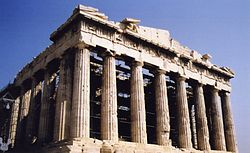- A brief account of the history of logic, from the The Oxford Companion to Philosophy (edited by Ted Honderich), OUP 1997, 497-500.
- A biography of Peter Abelard, published in the Dictionary of Literary Biography Vol. 115, edited by Jeremiah Hackett, Detroit: Gale Publishing, 3-15.
- Philosophy in the Latin Christian West, 750-1050, in A Companion to Philosophy in the Middle Ages, edited by Jorge Gracia and Tim Noone, Blackwell 2003, 32-35.
- Ockham wielding his razor!
- Review of The Beatles Anthology, Chronicle Books 2000 (367pp).
- A brief discussion note about Susan James, Passion and Action: The Emotions in Seventeenth-Century Philosophy.
- Review of St. Thomas Aquinas by Ralph McInerny, University of Notre Dame Press 1982 (172pp). From International Philosophical Quarterly23 (1983), 227-229.
- Review of William Heytesbury on Maxima and Minima by John Longeway, D.Reidel 1984 (x+201pp). From The Philosophical Review 96 (1987), 146-149.
- Review of That Most Subtle Question by D. P. Henry, Manchester University Press 1984 (xviii+337pp). From The Philosophical Review 96 (1987), 149-152.
- Review of Introduction to the Problem of Individuation in the Early Middle Ages by Jorge Gracia, Catholic University of America Press 1984 (303pp). From The Philosophical Review 97 (1988), 564-567.
- Review of Introduction to Medieval Logic by Alexander Broadie, OUP 1987 (vi+150pp). From The Philosophical Review 99 (1990), 299-302.
Thursday, December 17, 2009
Conseptual Art
Conceptual art is art in which the concept(s) or idea(s) involved in the work take precedence over traditional aesthetic and material concerns. Many of the works, sometimes called installations, of the artist Sol LeWitt may be constructed by anyone simply by following a set of written instructions.[1] This method was fundamental to LeWitt's definition of Conceptual art, one of the first to appear in print:
“ In conceptual art the idea or concept is the most important aspect of the work. When an artist uses a conceptual form of art, it means that all of the planning and decisions are made beforehand and the execution is a perfunctory affair. The idea becomes a machine that makes the art. ”
—Sol LeWitt[2]
This quotation highlights a key difference between a traditional work of art and a conceptualist installation: in one instance the hands-on skills of the artist are paramount; in the other they are not. Tony Godfrey, author of "Conceptual Art," asserts that conceptual art questions the nature of what is understood as art[3], a view first outlined by the artist Joseph Kosuth in his seminal manifesto of conceptual art, "Art after Philosophy" (1969).
The first wave of conceptual artists of the 1960s practised a more or less strict and focused idea-based art, which, in its presentation as text and other non-traditional or ephemeral forms, deliberately eschewed spectacle and defied the traditional visual criteria associated with the visual arts. However, through its association with the Young British Artists and the Turner Prize during the 1990s, in popular usage, particularly in the UK, "conceptual art" came to denote all contemporary art that does not practise the traditional skills of painting and sculpture.[4] It could be said that one of the reasons why the term "conceptual art" has come to be associated with various contemporary practices far removed from its original aims and forms lies in the problem of defining the term itself. As the artist Mel Bochner suggested as early as 1970, in explaining why he does not like the epithet "conceptual", it is not always entirely clear what "concept" refers to, and it runs the risk of being confused with "intention." Thus, in describing or defining a work of art as conceptual it is important not to confuse what is referred to as "conceptual" with an artist's "intention."
“ In conceptual art the idea or concept is the most important aspect of the work. When an artist uses a conceptual form of art, it means that all of the planning and decisions are made beforehand and the execution is a perfunctory affair. The idea becomes a machine that makes the art. ”
—Sol LeWitt[2]
This quotation highlights a key difference between a traditional work of art and a conceptualist installation: in one instance the hands-on skills of the artist are paramount; in the other they are not. Tony Godfrey, author of "Conceptual Art," asserts that conceptual art questions the nature of what is understood as art[3], a view first outlined by the artist Joseph Kosuth in his seminal manifesto of conceptual art, "Art after Philosophy" (1969).
The first wave of conceptual artists of the 1960s practised a more or less strict and focused idea-based art, which, in its presentation as text and other non-traditional or ephemeral forms, deliberately eschewed spectacle and defied the traditional visual criteria associated with the visual arts. However, through its association with the Young British Artists and the Turner Prize during the 1990s, in popular usage, particularly in the UK, "conceptual art" came to denote all contemporary art that does not practise the traditional skills of painting and sculpture.[4] It could be said that one of the reasons why the term "conceptual art" has come to be associated with various contemporary practices far removed from its original aims and forms lies in the problem of defining the term itself. As the artist Mel Bochner suggested as early as 1970, in explaining why he does not like the epithet "conceptual", it is not always entirely clear what "concept" refers to, and it runs the risk of being confused with "intention." Thus, in describing or defining a work of art as conceptual it is important not to confuse what is referred to as "conceptual" with an artist's "intention."
Subscribe to:
Post Comments (Atom)





No comments:
Post a Comment